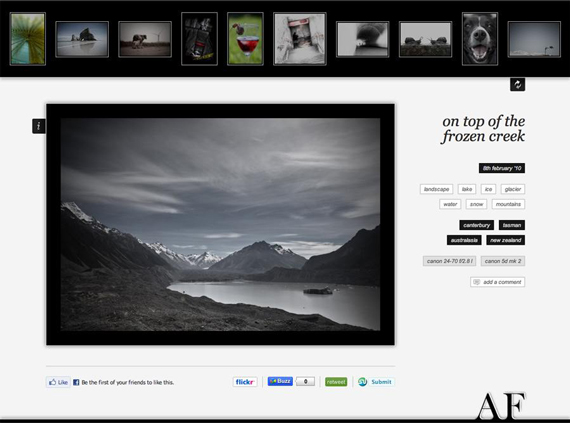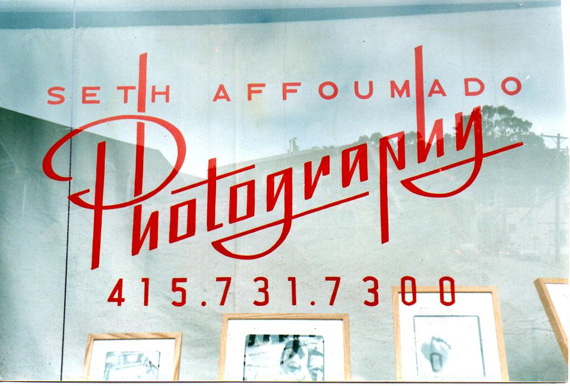Many photographers are experiencing difficult times in certain countries. Here are some of the questions I am hearing:
- “My phone is not ringing. My billings are down. Should I stop marketing and save money?”
- “Why should I create a new portfolio when I have a web site?”
- “Why should I shoot for my portfolio when clients are cutting back on budgets?”

Photo by Tony Armstrong-Sly
And of course there is that question that is on everyone’s lips, but no one wants to ask: “Is assignment photography a dying industry?”
NO. Please hear this loudly and clearly. Assignment photography is not dead. Not by a long shot. But your business might be if you are not marketing proactively.
It is critical that you continue to work on your portfolios, create websites, and send out direct mail that brands your business and creates visibility. In fact, the biggest mistake you can make during tough times is to drastically cut back on your selling and marketing.
You need to work, and clients are still hiring. While some companies have changed their buying patterns, others have seen less change. Magazines are still publishing, and many art buyers report that their buying habits haven’t changed, although some projects have been put on hold.
Assignments may be on hold, but your selling should not! The art of selling and marketing your work is cumulative. You can’t afford to randomly start and stop your process.
Since many other photographers choose to cut back on their selling and advertising during difficult times, your chance for greater visibility is improved. If you choose to be proactive, there is more opportunity for you to connect with buyers, because there are fewer people selling.
Many clients who are not producing work have more time to see you. Art directors who are not producing ads, and graphic designers who are waiting for approval on assignments, may be more accessible than ever before. Call contacts on your list and see if they are available for portfolio visits. Use any quiet time wisely. Reconnect with clients who you have not worked with in awhile. Check in and find out how they are and use this time to build on existing relationships.
Here are 5 specific steps that you can take now to help your business remain active, regardless of your finances:
1. Develop your visual value.
Have a specific tangible product to offer clients. Use any quiet time to create images, test, and edit visuals for a new or existing book. Review your current portfolio and play client. What message do you get from your book? What type of assignment would you hire yourself for? Conversely, what’s lacking in your book? Content, presentation, credibility? This is a great time to create a portfolio that you can market.
2. Develop a qualified list of contacts.
Buying a list is always helpful. Creative Access, is a good resource. If finances are a problem, learn how to create your own list of potential clients. For corporate leads, use the Standard Directory of Advertisers (found in the reference section of the library). For advertising leads, the Standard Directory of Advertising Agencies will be helpful, or go on the web to http://agencycompile.com. Graphic design studios and editorial publications can be accessed through their websites, which are a terrific source of visual, as well as specific, information for all potential clients. Once you have highlighted companies, publications and firms, call and ask who the photo buyer or buyers are. Ask agencies and graphic design firms to email or fax you a current creative list.
3. Create a well-rounded sales and marketing program.
There should be two components to your new business development efforts: sales and marketing. All too often, photographers develop marketing efforts but forget that sales efforts are key. What’s the difference between a sales effort and a marketing effort? Portfolio visits in person (yes they still happen!) and portfolios sent to buyers that you are interested in working with are sales efforts. Direct mail, source book ads, and websites are all marketing tools. They support the visual in the actual product, your portfolio.
4. Combine a portfolio with 2-3 other marketing efforts.
Buyers need repetition. They need to see your imagery over and over–preferably in different formats. Providing potential buyers the opportunity to see your images in a direct mail piece, a visual email, and in a portfolio presentation is critical. Buyers buy at different times, and they will find you through different avenues. You need to cover your bases and create visibility.
5. Brand all of your sales and marketing tools.
One of the key ingredients in any successful program is branding. Using your vision to set the tone, create a palette of colors, materials and design elements that will be present on your website, as well as in your portfolio and direct mail. When possible, work with a graphic designer or art director to set the look of your program. Branding also helps to create visibility and, in reality, when you develop a thoughtful, intelligent visual solution that speaks your message, you are building credibility with your audience, as you will be living the language and purpose of advertising and graphic design. A well-designed program builds trust as it speaks professionalism, knowledge, and confidence.
Yes, these are tough times, but the tides will turn. They always do. Nothing stays the same. Now is the time to begin what you never started or to go deeper into efforts you began awhile back. All hard work put into effect now will reap rewards later, when buyers start to buy, and the market turns around. When clients are ready to once again buy in full force, it’s the creative who continued to market and sell that will have a visibility factor amongst buyers. They are the photographers who will be very busy. Make sure that you are one of them.
About the Author:
Selina Maitreya teaches commercial and professional photographers of all levels how to build a profitable business.
Like This Article?
Don't Miss The Next One!
Join over 100,000 photographers of all experience levels who receive our free photography tips and articles to stay current:








Leave a Reply